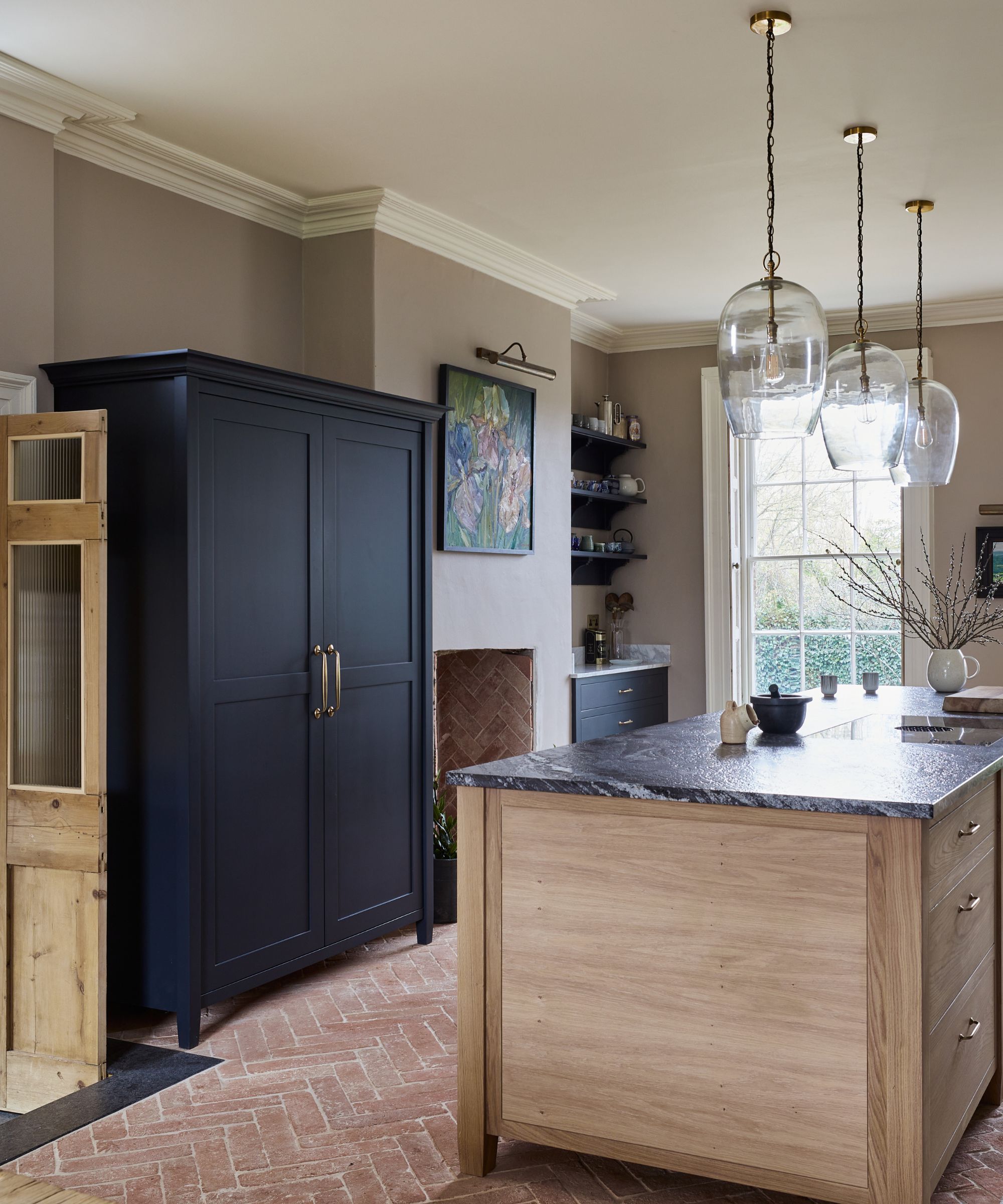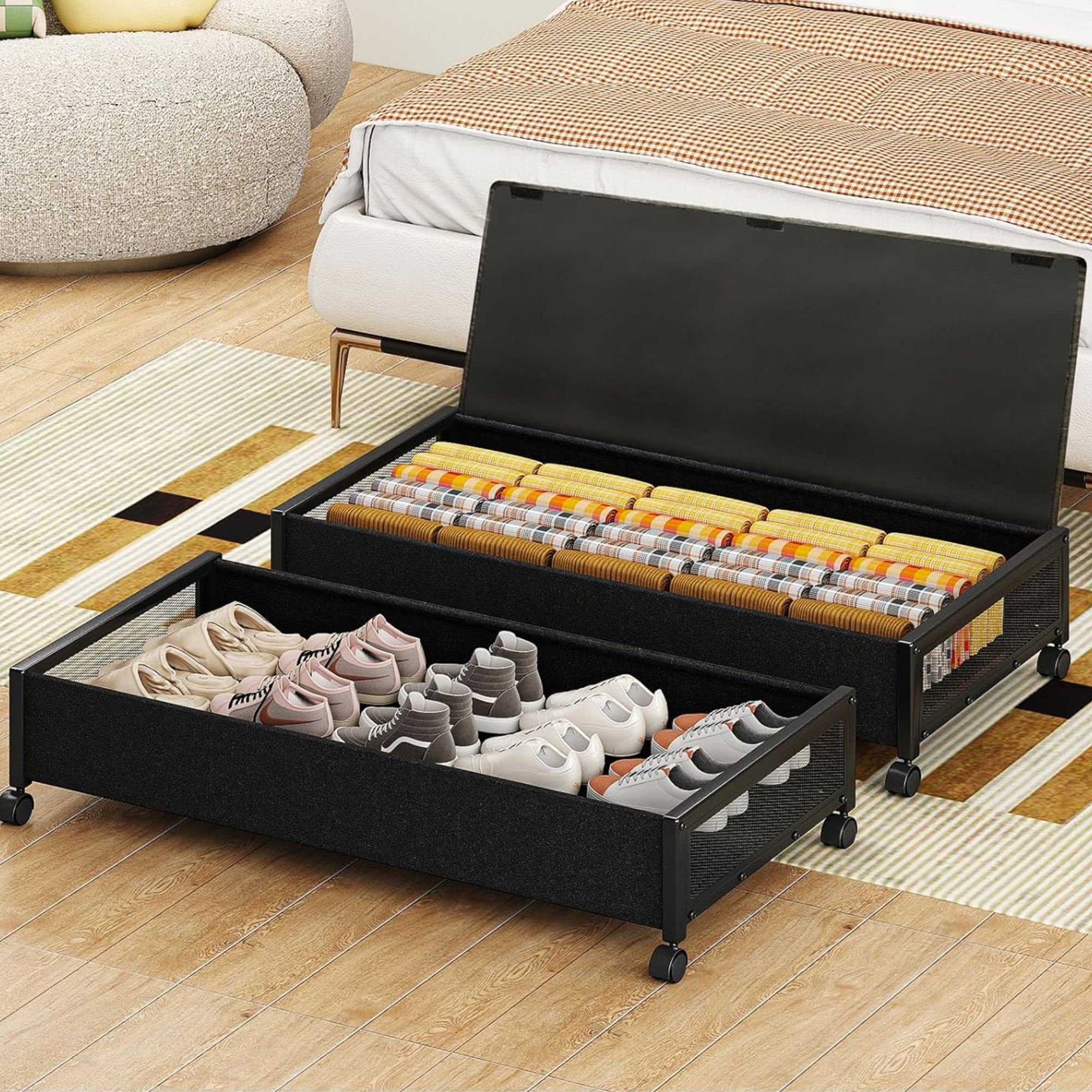How to break the stages of clutter for a more peaceful home
Reduce the need for regular decluttering by breaking the stages that lead to its accumulation


Often, it may seem that clutter constantly accumulates, regardless of your decluttering efforts. However, by breaking the cycle of clutter, you can establish new routines for a more clutter-free and relaxing environment.
A cluttered living space often reflects the five stages of clutter, which include habits like impulsive shopping, disorganization, difficulty letting go of items, a lack of storage, or not maintaining decluttering routines. To truly combat a clutter-filled home in the long term, it’s important to assess your lifestyle habits and any practices that contribute to chaos.
The key is to strategically approach decluttering through a range of preventive techniques and home organization habits. Our experts recommend five tips to break the cycle of clutter accumulation.
How to break the stages of clutter
'The cycle of clutter can be stopped by blocking out uninterrupted time in your calendar to organize everything in the home by the five essential steps,' explains Kimberly Corey, professional home organizer and founder of Finely Sorted Organizing.
These five steps are:
- Categorize: Group like with like.
- Assign: Choose a home where an object lives in your home so you always know where to find it.
- Edit: Discard unused or unloved things you don't have to keep.
- Reduce: Engage in conscientious shopping practices.
- Maintain: Put things back in their chosen home after use and repeat organizing process yearly.
1. Categorize

Begin by categorizing items. This method can help you to visualize the extent of your clutter and makes the task less daunting by breaking down the decluttering process into manageable stages.
Keep like items together so you are aware of which items you have. This can help you assess your needs, meaning you won't purchase the same or similar items unnecessarily. This will also help you decide what to declutter, such as similar items and unnecessary duplicates.
Design expertise in your inbox – from inspiring decorating ideas and beautiful celebrity homes to practical gardening advice and shopping round-ups.
Additionally, you can categorize items when decluttering based on what to 'keep,' 'donate,' 'sell,' and 'discard.' This helps prioritize and organize belongings, making the process more systematic.

Starting in 2000, Finely Sorted Organizing, LLC has been helping people declutter, downsize, rightsize, rearrange the basement, clean out a family home, with closet makeovers, garage resets, kitchen retooling, office optimizations, mudroom triages, file cabinet overhauls help to ease anxiety and feelings of frozen immobility caused by lack of systemization in a world filled with curve balls
2. Assign

Breaking the stages of clutter requires us to establish sustainable organizational systems. Having a 'home' for everything to be stored when it is not being used is a key part of preventing clutter.
'Clutter builds up quickly with items that are dumped anywhere 'convenient', and they constantly get moved from place to place,' explains Brenda Scott, professional organizer and founder of Tidy MySpace. Keeping items in assigned spots will help you visualize the items that may be acting as clutter.
'Assign a designated home for every category item, keeping like-with-like, near where they are most used,' advises Kimberly Corey. Do this one room at a time, going through everything and moving items into designated places. Invest in storage solutions that fit your lifestyle, whether it's shelving, cabinets, baskets, or drawer organizers.
3. Edit

'The clutter cycle tends to come from a combination of not wanting to throw things away that aren’t necessarily broken, getting the best value for money out of your purchases, or a fear of ‘what if’ it comes in useful one day,' explains Victoria Foster, interior stylist at ScS
'Breaking the clutter cycle is only achieved by changing your mindset and outlook on your belongings,' she continues. 'Not everything you purchase or are gifted needs to stay with you your whole life. Many belongings need to be temporary and only stay with you for the duration that they still serve a valuable purpose.
The key is to keep belongings that you can find a suitable home for. Otherwise, these items immediately become clutter, which can cause stress and anxiety.
Ask yourself where most of your clutter accumulates. What kind of stuff is piling up? This may be a drop-zone for keys, shoes, and junk mail as you come in the door or kitchen gadgets and utensils. Make a mental note of the patterns that indicate areas to focus your decluttering efforts on.
'Next, you may have to do one big decluttering session before implementing new habits to avoid clutter building up in the future,' says Victoria Foster. 'If you do plan to have a large clearout, it’s best to split the task up into a few sessions; tackling it all at once can be overwhelming.'
Using the snowball decluttering approach can be a great technique to make decluttering easier.
All-in-One Declutter Planner | $3.92 at Etsy
This printable decluttering planner can help you tackle your home's mess without missing a step.

Brenda Scott is passionate about home organizing, decluttering, and creating a safe home. At Tidy My Space, she helps people to keep their homes tidy when life gets busy. Brenda shares useful tips and gives practical help with sorting and editing her clients' spaces, leading them to feel less stressed and bringing the luxury of time to be spent with family, friends, or on themselves.
4. Reduce incoming items

Engaging in conscientious shopping practices is a great way to prevent items from build-up, breaking the cycle of clutter.
This idea stems from the one-in-one-out rule, which encourages a mindful approach to purchasing and prevents buying items unnecessarily. Instead, only purchase essential items or declutter a similar item when you purchase a new one. Also, 'Instead of accumulating a large number of items, focus on acquiring high-quality, durable pieces,' recommends Jackie Pittman, founder of Chez Nous Organizing.
It's not just physical purchases this rule applies to. 'Remember to unsubscribe to any mailings that no longer interest you and switch to paperless bills to reduce paper filing and storage decisions,' says Brenda Scott.
5. Maintain

The final stage in breaking the cycle of clutter is to engage in habits that will maintain a clutter-free space.
'Overcoming an overly cluttered home often begins with incorporating a daily decluttering routine,' says Henrique Conceicao, Area Manager at Total Clean. 'Making small, consistent efforts like decluttering for 15 minutes each day can be an effective prevention method.'
'Once you change your mindset to not view everything as permanent belongings that have to stay with you your whole life, you will be able to get into the habit of giving all your belongings a new home when they stop serving their purpose,' says Victoria Foster, Interior Stylist. 'This way, you will avoid having to do huge clearouts when the clutter becomes too much to bear, which can be stress-inducing and take up a lot of your time.'
Karina Toner, operations manager at Spekless Cleaning advises: 'Instead of overwhelming yourself by trying to tackle the entire house every day, rotate your focus areas. Choose a specific room or zone each day to give a bit of extra attention. This systematic approach ensures that every part of your home receives regular maintenance.'
Additionally, monthly or even weekly decluttering sessions can serve you well in maintaining cleanliness and order. Continue to reassess belongings, and maintain each step mentioned above. Consistency is key to maintaining a clutter-free environment.
'Ultimately, a mindful approach is key to effective decluttering,' says Henrique Conceicao from Total Clean. 'Practicing mindfulness will also help to kick this habit in the long term, rather than acting as a short-term strategy.'

Lola Houlton is a news writer for Homes & Gardens. She has been writing content for Future PLC for the past six years, in particular Homes & Gardens, Real Homes and GardeningEtc. She writes on a broad range of subjects, including practical household advice, recipe articles, and product reviews, working closely with experts in their fields to cover everything from heating to home organization through to house plants. Lola is a graduate, who completed her degree in Psychology at the University of Sussex. She has also spent some time working at the BBC.



